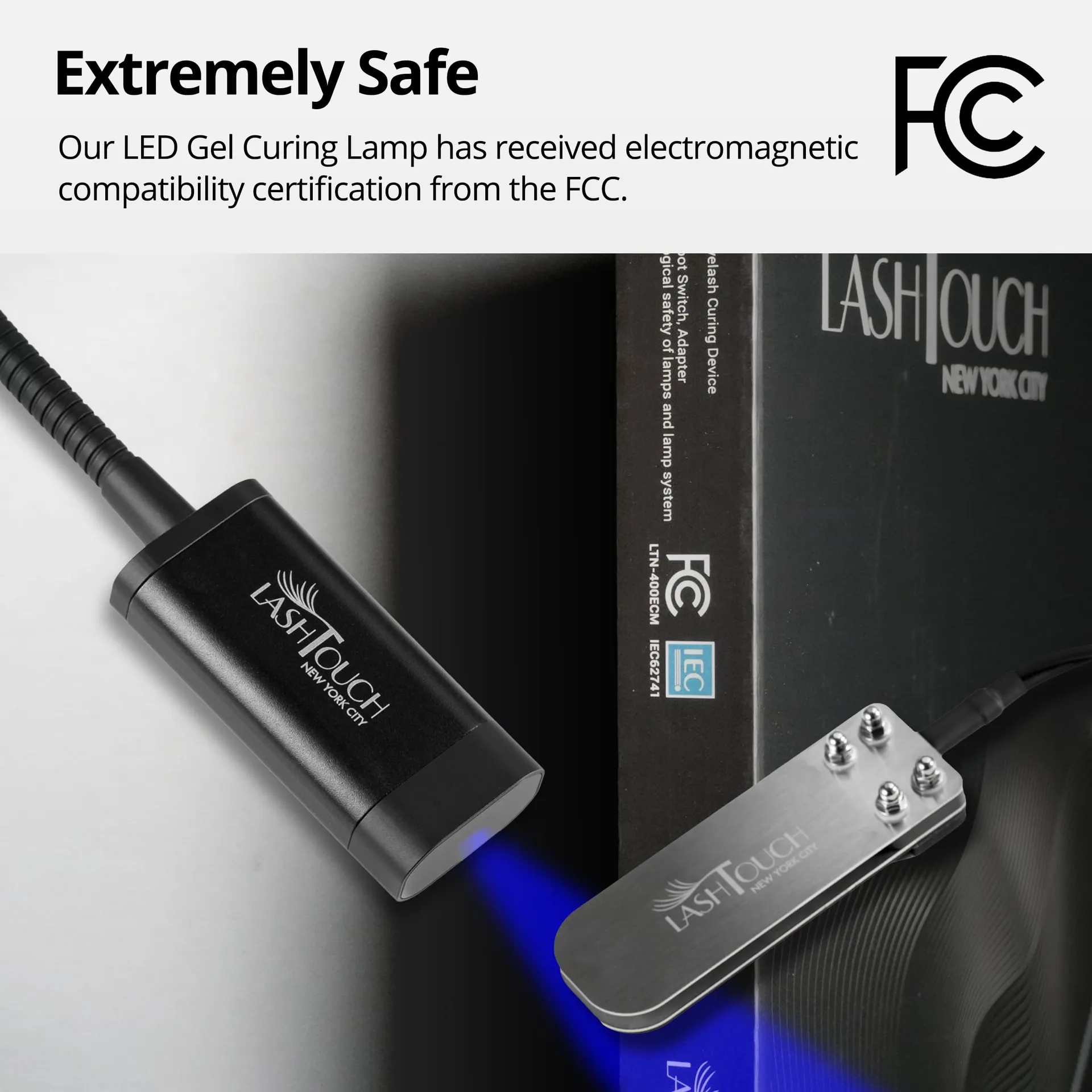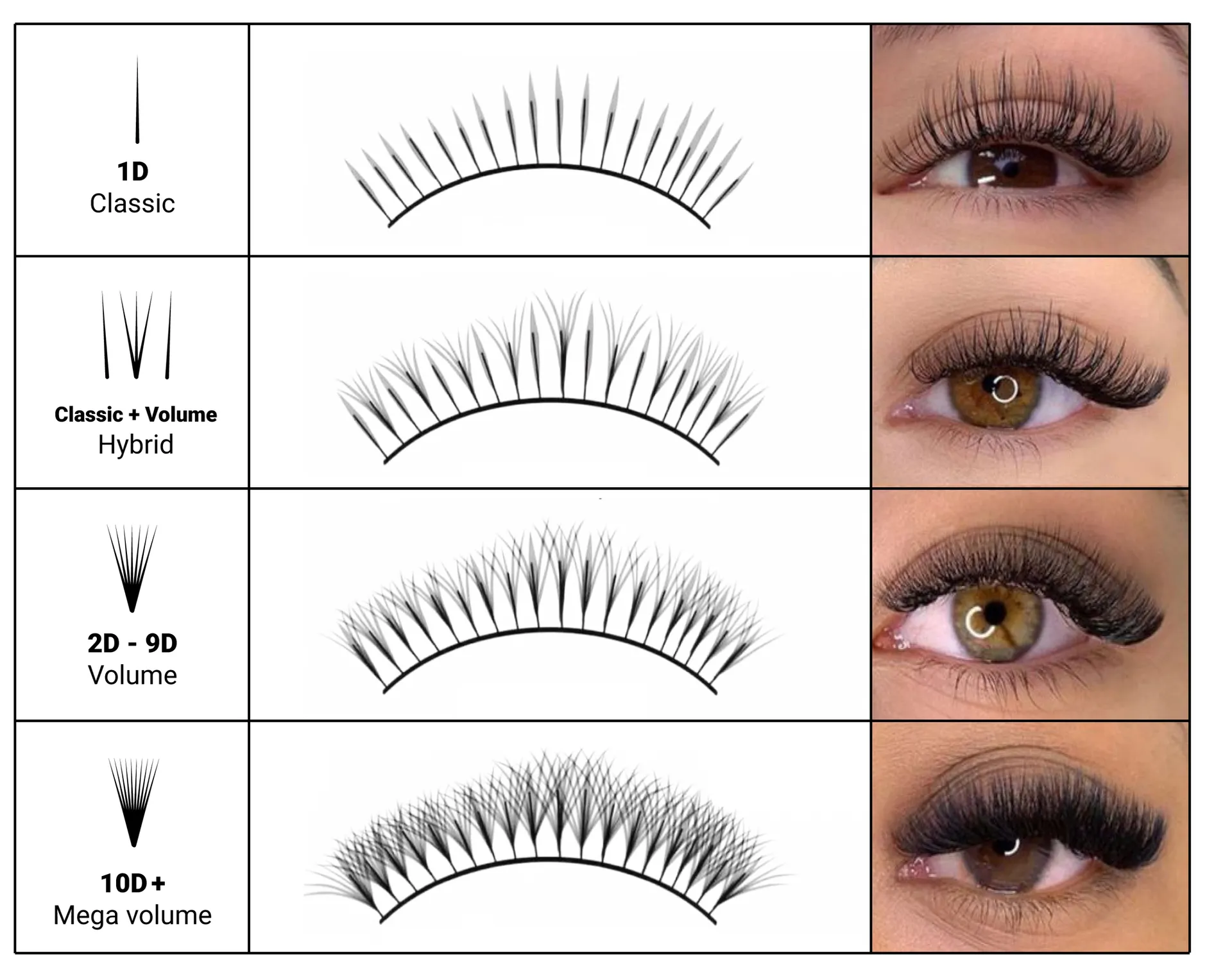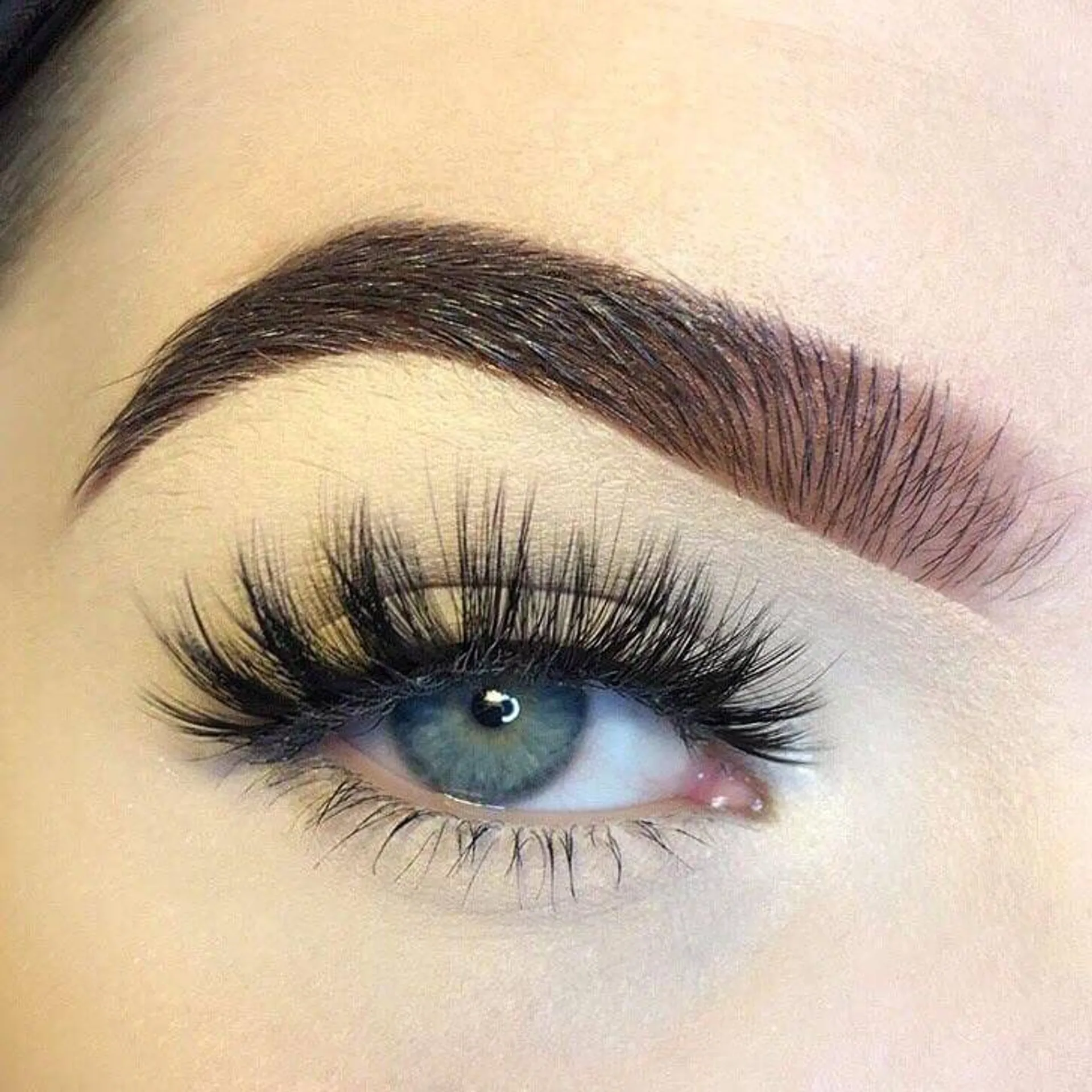The lash industry is experiencing its most significant technological breakthrough in years, and it is generating both excitement and controversy in equal measure. UV lash extensions, also known as LED light-cured lash extensions, are rapidly gaining attention as salons across the country begin adopting this innovative technique. Unlike traditional lash extensions that rely on adhesives which cure slowly through air exposure, UV lash extensions use specialized light-activated glue that hardens instantly when exposed to a safe LED light beam.
This revolutionary approach promises to solve many of the frustrations that have plagued both lash artists and clients for years. Environmental factors like humidity, temperature fluctuations, and inconsistent drying times have always been challenges in achieving perfect retention. The UV curing method claims to eliminate these variables entirely, offering up to 30% longer retention, reduced sensitivity for clients with adhesive allergies, and dramatically improved water resistance. However, as with any new beauty technology, questions about safety, effectiveness, and long-term effects are sparking intense debate within the professional community.
If you have been considering trying UV lash extensions or are a lash artist evaluating whether to invest in this equipment, understanding both the revolutionary benefits and potential risks is essential. This comprehensive guide will walk you through everything you need to know about this trending technique, from how the technology actually works to what the latest research says about safety concerns.
What Are UV Lash Extensions and How Do They Work?
UV lash extensions represent a fundamental shift in how lash adhesive bonds extensions to your natural lashes. Traditional lash glue contains cyanoacrylate, which polymerizes (hardens) when exposed to moisture in the air. This process typically takes 24 to 48 hours to fully cure, during which time the bond remains vulnerable to environmental factors and requires careful aftercare to avoid premature fallout.
The UV lash system uses a completely different approach. The specialized adhesive remains in a liquid state until it is exposed to a specific wavelength of LED light, at which point it undergoes instant polymerization. According to professional lash technicians using LED technology, this controlled curing process creates a stronger, more flexible bond that is fully waterproof immediately after application.
The Application Process
During a UV lash extension appointment, your lash artist applies the light-activated adhesive to each extension and attaches it to your natural lash, just as they would with traditional methods. The key difference comes next. Instead of waiting for the adhesive to dry naturally, the technician uses a handheld LED wand to cure each lash individually. The curing process takes only one to two seconds per lash, which means the adhesive reaches full strength almost instantly.
This immediate curing offers several practical advantages. First, it eliminates the sensitive period when freshly applied lashes are most vulnerable to movement or moisture exposure. Second, it allows lash artists to work more efficiently without worrying about humidity levels or room temperature affecting their work. Third, clients can leave the salon with fully cured lashes that are immediately water-resistant, rather than having to avoid water for the first 24 to 48 hours.
The Benefits: Why UV Lash Extensions Are Trending
The surge in popularity of UV lash extensions is not simply due to novelty. This technology addresses real problems that have frustrated both clients and lash professionals for years. Understanding these benefits helps explain why so many salons are making the investment in UV equipment and training.
Superior Retention and Longevity
One of the most compelling claims about UV lash extensions is their dramatically improved retention. Many lash artists and clients report that UV-cured extensions last significantly longer than traditional sets, with some experiencing up to 30% better retention. This improvement stems from the instant, complete polymerization of the adhesive, which creates a stronger molecular bond than adhesives that cure slowly through air exposure.
The water resistance of UV-cured adhesive is particularly impressive. Because the bond is fully formed immediately, there is no vulnerable period where moisture can interfere with curing. This means you can shower, swim, or exercise without worrying about compromising your lash extensions, even on the same day as your appointment. For active clients or those living in humid climates, this represents a significant quality-of-life improvement.
Reduced Chemical Sensitivity
Traditional lash adhesives release fumes during the curing process as the cyanoacrylate reacts with moisture in the air. These fumes can cause eye irritation, watering, or allergic reactions in sensitive clients. Because UV adhesive cures instantly under light rather than slowly through air exposure, there is minimal off-gassing during and after the application process.
Several lash artists have reported that clients who previously experienced irritation with traditional adhesives have been able to wear UV lash extensions comfortably. However, it is important to note that UV adhesives still contain bonding agents, and some clients may still experience reactions. The reduction in fumes does not guarantee complete elimination of sensitivity issues, but it does represent a meaningful improvement for many people.
Faster Application and Immediate Results
For lash artists, the efficiency gains from UV technology are substantial. Traditional volume lash applications require careful attention to humidity levels, temperature control, and timing to ensure proper adhesive curing. UV systems eliminate these variables, allowing technicians to work more quickly and confidently. Some experienced lash artists report cutting their application time by up to 50% once they master UV techniques.
Clients benefit from this efficiency as well. Not only do appointments take less time, but the immediate water resistance means you can resume your normal activities right away. There is no need to avoid steam, sweat, or water for the first day or two, which makes UV lash extensions particularly appealing for clients with busy lifestyles or those getting extensions before special events like vacations or weddings.
Safety Concerns: What You Need to Know
Despite the impressive benefits, UV lash extensions have sparked considerable debate about safety, particularly regarding UV light exposure near the delicate eye area. Understanding these concerns and what the current research shows is crucial for making an informed decision about whether this technology is right for you.
UV Light Exposure and Eye Safety
The primary safety concern surrounding UV lash extensions centers on the potential effects of UV light exposure to the eyes and surrounding skin. UV radiation is well-established as a risk factor for various eye conditions, including cataracts, macular degeneration, and eyelid skin cancers. Medical research has documented the risks of UV exposure from sources like sunbeds and unprotected sun exposure.
However, it is important to distinguish between different types of UV exposure. Most UV lash systems use LED lights that emit primarily UVA wavelengths at very low intensities, and exposure is extremely brief (one to two seconds per lash). The Radiation and Nuclear Safety Authority examined UV lash devices and found that when used properly with eyes closed, the exposure levels are minimal.
Current Research and Expert Opinions
The challenge with evaluating UV lash extension safety is that the technology is relatively new, and long-term studies are not yet available. Industry experts note the lack of comprehensive long-term data on repeated UV lash applications over months or years. This absence of data does not necessarily indicate danger, but it does mean we cannot yet make definitive statements about long-term safety.
What we do know is that proper application technique is critical. Eyes must remain fully closed during the curing process, and technicians should use the minimum light exposure necessary to cure the adhesive. Reputable training programs emphasize these safety protocols, and choosing a properly trained lash artist is essential for minimizing any potential risks.
Who Should Be Cautious
Certain individuals should exercise extra caution or avoid UV lash extensions altogether. If you have a history of eye conditions, are taking photosensitizing medications, or have concerns about UV exposure, consult with your eye doctor before trying UV lash extensions. Pregnant women may also want to wait until more long-term safety data is available, following the general precautionary principle for new cosmetic technologies during pregnancy.
It is also worth noting that not all allergic reactions are eliminated by UV systems. While the reduced fumes help many sensitive clients, some people may still react to the adhesive ingredients themselves. If you have experienced severe allergic reactions to traditional lash extension adhesives, a patch test with UV adhesive is strongly recommended before committing to a full set.
UV Lash Extensions vs Traditional Extensions
Understanding how UV lash extensions compare to traditional methods helps you make an informed decision about which option best suits your needs, lifestyle, and budget. While UV technology offers compelling advantages, traditional lash extensions remain a proven, reliable choice with decades of safety data.
Retention and Maintenance
UV lash extensions typically offer superior retention compared to traditional extensions, with many clients reporting their lashes lasting three to four weeks before needing a fill, compared to two to three weeks with traditional methods. This improved retention can actually make UV lashes more cost-effective over time, despite potentially higher initial application costs, because you need fewer fill appointments.
However, retention also depends heavily on your natural lash growth cycle, aftercare habits, and lifestyle factors. Even with UV extensions, you will still need regular fills as your natural lashes shed and grow. The proper aftercare routine remains essential for maximizing the lifespan of your extensions, regardless of which adhesive system is used.
Cost Considerations
UV lash extension appointments typically cost more than traditional lash extensions, with prices ranging from $150 to $300 for a full set, compared to $100 to $200 for traditional extensions. This price difference reflects the investment salons make in UV equipment and specialized training. However, when you factor in the improved retention and potentially fewer fill appointments, the overall cost difference may be minimal or even favor UV extensions in the long run.
Availability and Accessibility
Traditional lash extensions are widely available at virtually every lash salon, while UV lash extensions are still relatively new and not yet offered everywhere. If you are interested in trying UV lashes, you may need to research salons in your area that have invested in this technology and ensure the technicians have received proper training in UV application techniques.
How to Choose the Right Option for You
Deciding whether UV lash extensions are right for you involves weighing the benefits against potential concerns and considering your individual circumstances. If you have struggled with poor retention from traditional extensions, live in a humid climate, or have experienced mild sensitivity to traditional adhesive fumes, UV lash extensions may offer significant improvements to your experience.
However, if you are particularly concerned about any UV exposure near your eyes, prefer to wait for more long-term safety data, or are satisfied with your current traditional lash extensions, there is no compelling reason to switch. Traditional lash extensions remain a safe, effective option with decades of proven results.
When choosing a salon for UV lash extensions, prioritize finding a technician who has received proper training in UV application techniques and follows strict safety protocols. Ask about their experience with the technology, what type of UV system they use, and how they ensure client safety during the curing process. A knowledgeable, experienced technician will be happy to answer your questions and address any concerns.
Ultimately, whether you choose UV or traditional lash extensions, the most important factors for beautiful, long-lasting results remain the same: a skilled lash artist, high-quality products, and diligent aftercare. Understanding your options empowers you to make the choice that best aligns with your priorities, comfort level, and beauty goals. As with any beauty treatment, staying informed about both the benefits and potential risks ensures you can enjoy your lash extensions with confidence.
If you are considering different lash extension styles to complement your UV lashes, or want to explore other trending techniques like hybrid lash extensions, our comprehensive guides can help you navigate all the latest options in lash enhancement technology.



